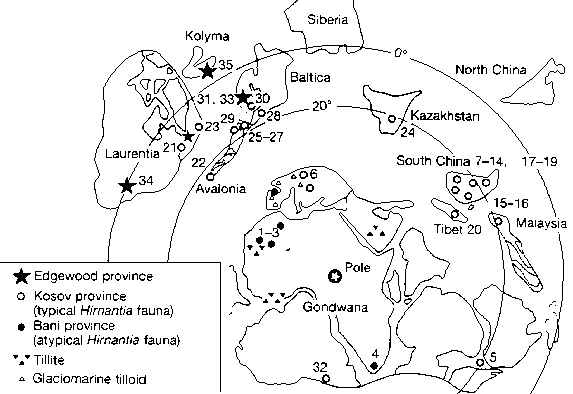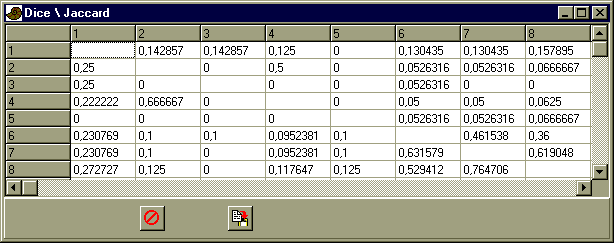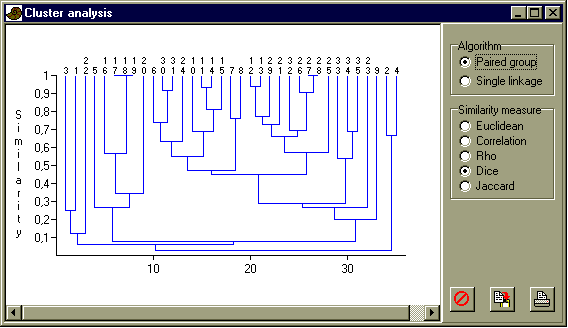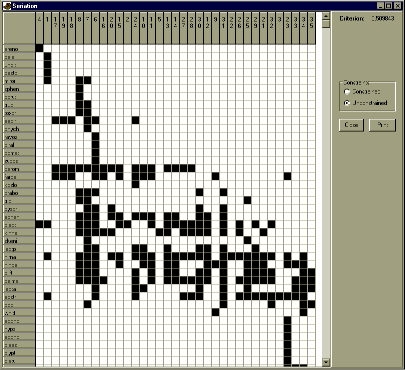|
Case study 7 -
Biogeography of late Ordovician brachiopods
|
Data file: hirnanti.dat
During the latest Ordovician (Hirnantian), three discrete brachiopod provinces
have been identified, developed against a background of regression
associated with a major glacial event. The typical Hirnantia
fauna (Kosov province) occupied temperate and subtropical latitudes
whilst the Edgewood province straddled the equator and the atypical
Hirnantia fauna (Bani province) circumscribed the south pole:

Rong & Harper (1988) recorded the distribution of
42 genera across 32 Hirnantian localities. The modified data set is
available on hirnanti.dat.
Jaccard and Dice coefficients
Open the file Hirnanti.dat, select all, and choose 'Dice/Jaccard'
in the Statistics menu:

Note the sites with the highest mutual correlations.
More information about Jaccard and Dice coefficients can be found
in the manual.
Cluster analysis
Clustering is carried out by rows. We want to cluster localities,
which are currently in columns, so you must first transpose
the matrix (Edit menu). Then select 'Cluster' in the Multivar menu.
Try different algorithms and distance measures, and compare the
results. Below is shown a dendrogram based on the Paired Group
clustering of the Dice coefficients. Can the three provincial groupings
established by Rong & Harper (1988) be
confirmed?

More information about the clustering module can be found
in the manual.
Seriation
For seriation, the taxa need to be placed in columns again. Select
'Transpose' in the Edit menu if necessary. Then choose 'Seriation'
in the Multivar menu. The calculation time may be substantial.
Considerable opportunity is available to experiment with constrained
and unconstrained seriation on this large data set. Below is shown
the result of an unconstrained seriation. Can the starting matrix be
transformed to approximate to the faunal gradients already established
qualitatively for the Hirnantian?

More information about the seriation module can be found
in the manual.
Suggested answers
Next: Case study 8




